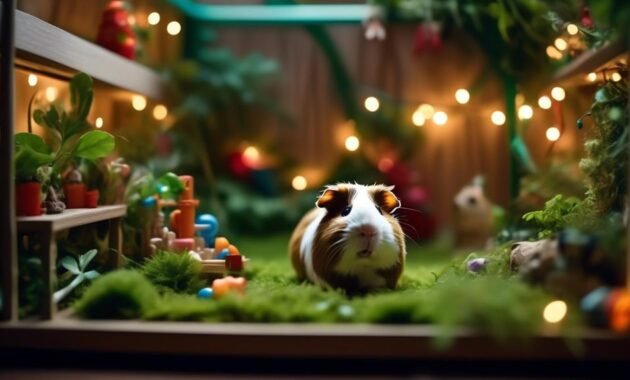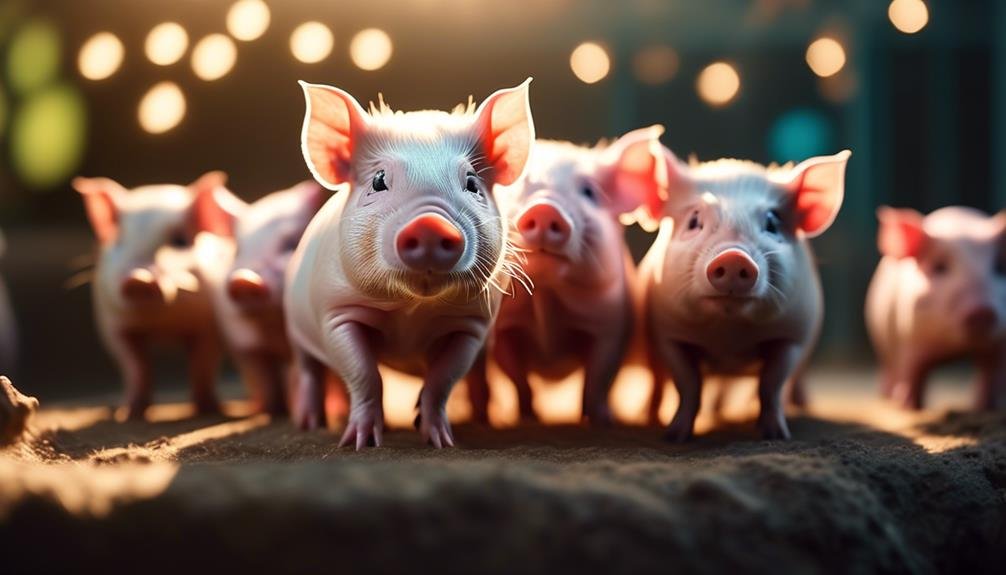
Welcome to the captivating world of Skinny Pigs, a captivating species of guinea pig that has piqued the curiosity of both pet enthusiasts and researchers. With their distinctive hairless or mostly hairless appearance, Skinny Pigs have a fascinating history dating back to their discovery in 1978 through a genetic mutation.
While they may look different from their furry counterparts, these unique creatures possess their own charm and endearing qualities. In this article, we will explore the origins of Skinny Pigs, delve into their temperament and care requirements, discuss their special skin care needs, and provide valuable insights into suitable housing options and where to acquire one as a pet.
So, join us on this journey as we uncover the intriguing world of Skinny Pigs and open the door to a truly extraordinary companionship.
Key Takeaways
- Skinny pigs are a hairless variety of guinea pig originating from Canada.
- They make great pets, as they are docile and unlikely to fight or bite.
- Skinny pigs have a high metabolism and require twice as much food as furry guinea pigs.
- Proper skin care is essential for skinny pigs, as they are sensitive to UV light and prone to dry skin and fungal infections.
The Origins of Skinny Pigs

The origins of skinny pigs can be traced back to a genetic mutation that was first identified in 1978, resulting in their unique hairless or mostly hairless appearance. This mutation occurred in a laboratory in Montreal, Canada, where an unexpected litter of hairless guinea pigs was born.
These hairless guinea pigs were then bred selectively to establish the skinny pig breed. The genetic mutation responsible for their hairlessness is a recessive trait, which means that both parents must carry the gene for it to be expressed in their offspring.
Over time, the skinny pig breed has gained popularity as a unique and fascinating pet. Today, they are commonly bred by reputable breeders and can also be adopted from rescue organizations.
Temperament and Care of Skinny Pigs

How do skinny pigs behave and what care do they require?
- Skinny pigs are docile and make great pets.
- They are unlikely to fight or bite in most situations.
- They can be skittish when faced with unfamiliar scenarios.
- Skinny pigs are social animals and prefer companions of the same species.
- Once accustomed to being held, they become cuddly companions.
Skinny pigs have a high metabolism and eat twice as much as furry guinea pigs. Therefore, they should be supplied with hay, water, and fresh vegetables daily. Their cage needs more frequent cleaning due to increased eating. It's important to note that their skin is sensitive to UV light and can develop dry skin if not cared for properly. They are also susceptible to fungal infections and should be kept in a dry and clean environment.
To provide adequate skin care, skinny pigs should be protected from sunburn and other skin damage from UV light. Coconut oil can be used to treat dry skin. However, it is important to avoid using creams, fragrances, and other topicals as they can be sensitive to them. Additionally, their bedding should be kept dry and clean to prevent fungal infections. Regulating the environmental temperature is crucial to keep them comfortable.
When it comes to housing options, Guineadad is a recommended cage designed specifically for skinny pigs. It provides a safe and comfortable environment, is made from high-quality materials, and has a unique design for easy cleaning. Guinealoft is another type of guinea pig enclosure that is safe for skinny pigs. It features cut lucite holes to prevent skin scraping and provides a stylish look. Guinealofts are also easy to assemble and maintain.
If you are interested in getting a skinny pig, they can be purchased from reputable breeders or adopted from rescue organizations. It is important to research and find a breeder or rescue organization with a good reputation. Before making a purchase, ensure that the skinny pig is healthy and well-cared for. To gain comprehensive information on skinny pig care, you can refer to 'The Complete Guide to Skinny Pigs', which is available as a downloadable booklet. It covers various topics such as diet, housing, grooming, and health care.
Essential Skin Care for Skinny Pigs
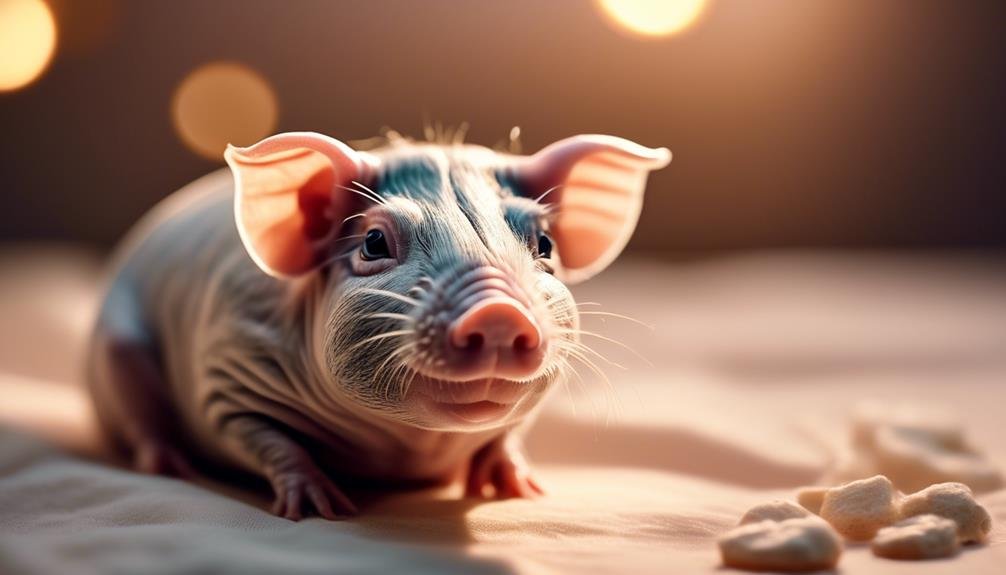
Skinny pigs, being hairless or mostly hairless, require essential skin care to maintain their health and well-being. Due to their lack of fur, skinny pigs are vulnerable to sunburn and other skin damage from UV light. They are also prone to developing dry skin, which can be treated with coconut oil. However, it is important to note that skinny pigs are sensitive to creams, fragrances, and other topicals. Additionally, they are susceptible to fungal infections if their bedding is not kept dry and clean. To regulate their skin's health, it is crucial to maintain a comfortable environmental temperature for them. Here is a table summarizing the essential skin care needs of skinny pigs:
| Skin Care Needs | Recommendations |
|---|---|
| UV Protection | Provide shade and limit sun exposure. |
| Moisturization | Use coconut oil for dry skin. |
| Avoid Topicals | Avoid using creams and fragrances on their skin. |
| Clean Environment | Keep their bedding dry and clean. |
| Temperature Control | Regulate the environment for their comfort. |
Housing Options for Skinny Pigs
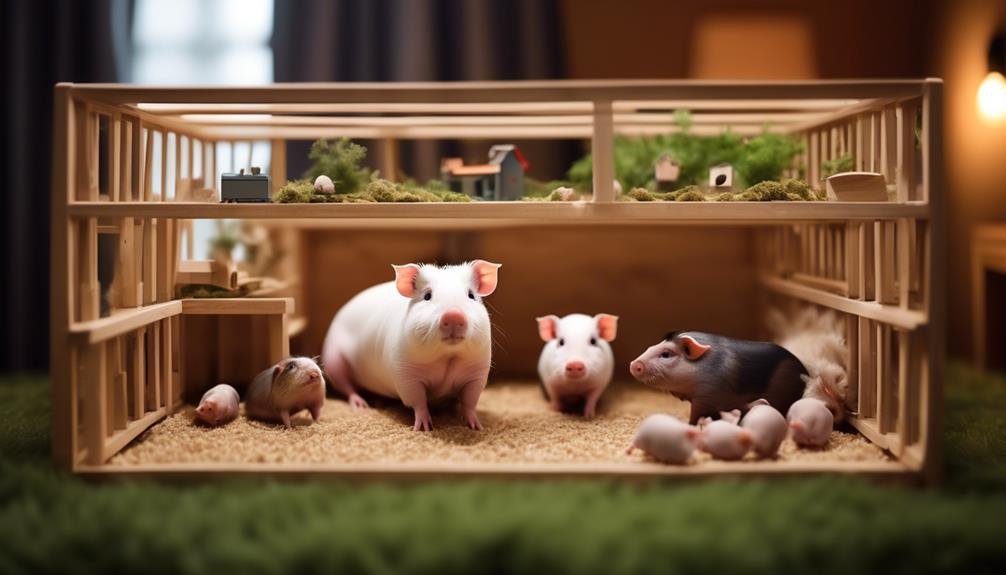
When considering suitable housing options for skinny pigs, it is important to prioritize their comfort, safety, and specific needs. Here are five housing options to consider:
- Guineadad: This type of guinea pig cage is designed to provide a safe and comfortable environment. It is made from high-quality materials and has a unique design for easy cleaning. Guineadads come in different sizes to accommodate different numbers of guinea pigs.
- Guinealoft: Another option is a guinea pig enclosure specifically designed for skinny pigs. Guinealofts have cut lucite holes to prevent skin scraping and provide a stylish look. They are also easy to assemble and maintain.
- C&C Cage: A popular choice among guinea pig owners, the C&C cage allows for customization and provides ample space for skinny pigs to move around.
- Plastic Bin Cage: This option is budget-friendly and easy to clean. Plastic bin cages can be customized with ramps and hideouts to create a stimulating environment for skinny pigs.
- Indoor Playpen: For those who want to give their skinny pigs more room to roam, an indoor playpen can be a great option. It provides a safe and controlled space for them to explore and play.
Remember to choose a housing option that meets the specific needs of your skinny pig and provides them with a comfortable and secure environment.
Where to Get a Skinny Pig
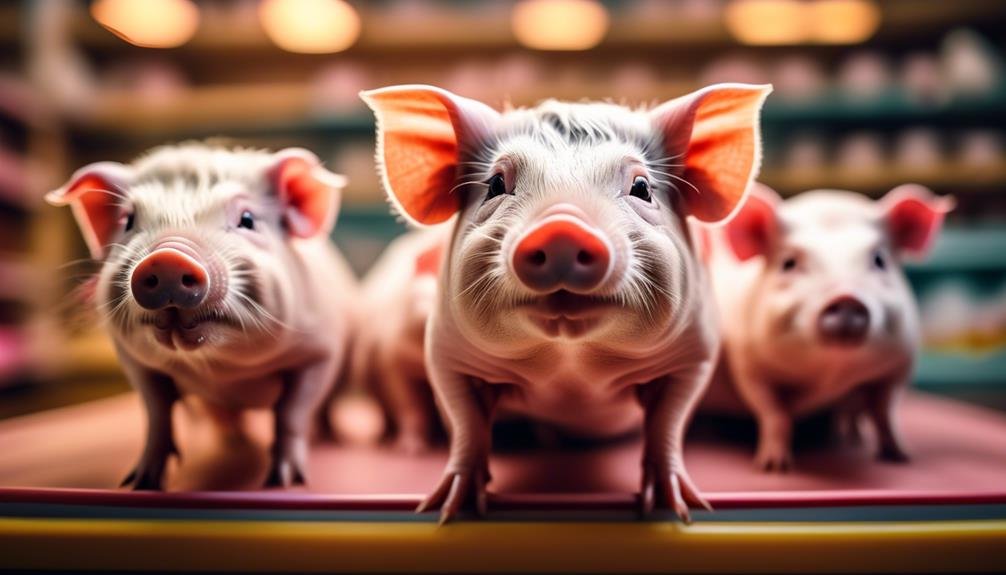
After considering suitable housing options for your skinny pig, it is important to know where you can acquire one of these unique and fascinating pets. Skinny pigs can be purchased from reputable breeders or adopted from rescue organizations. It is crucial to research and find a breeder or rescue organization with a good reputation to ensure the skinny pig is healthy and well-cared for before making a purchase. Additionally, "The Complete Guide to Skinny Pigs" is available as a downloadable booklet that provides comprehensive information on diet, housing, grooming, and health care for skinny pigs. This guide can be a valuable resource for prospective skinny pig owners.
| Sources to Acquire Skinny Pigs | Description | Benefits |
|---|---|---|
| Reputable Breeders | Ensure healthy, well-cared for skinny pigs | Reliable source of healthy pets |
| Rescue Organizations | Adopt skinny pigs in need of a loving home | Provide a second chance for abandoned or neglected pets |
| "The Complete Guide to Skinny Pigs" | Comprehensive information on caring for skinny pigs | Valuable resource for prospective owners |
The Unique Characteristics of Skinny Pigs
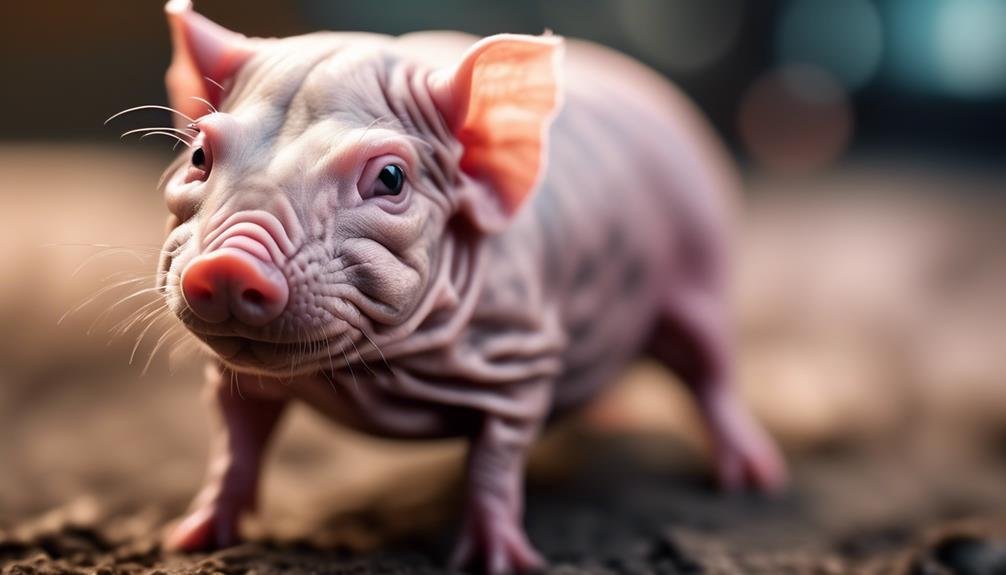
With their distinct lack of fur and patches of hair on their face and legs, skinny pigs exhibit unique physical characteristics that set them apart from other guinea pig species. These characteristics include:
- Hairlessness or mostly hairlessness, which is the result of a genetic mutation.
- Patches of fur on their face and legs, highlighting their hairless bodies.
- Originating from Canada, making them the only guinea pig species from this country.
- Commonly bred as pets and used as animal subjects for testing.
- A vulnerability to sunburn and other skin damage from UV light, requiring special skin care.
These unique physical traits make skinny pigs fascinating and intriguing pets, requiring specific care to ensure their well-being.
Whether it is their hairless bodies or their origin from Canada, these characteristics make skinny pigs stand out from other guinea pig species.
Feeding and Nutrition for Skinny Pigs

Skinny pigs, with their unique physical characteristics and specific care requirements, also require a specialized approach when it comes to feeding and nutrition. Due to their high metabolism, skinny pigs need to eat twice as much as furry guinea pigs. Their diet should consist of hay, water, and fresh vegetables, which should be provided daily. To ensure a balanced and nutritious diet, it is important to include a variety of vegetables such as bell peppers, cucumbers, and leafy greens. Additionally, it is recommended to supplement their diet with vitamin C, as skinny pigs, like their furry counterparts, are unable to produce this essential nutrient on their own. Here is a table outlining some suitable vegetables for skinny pigs:
| Suitable Vegetables for Skinny Pigs |
|---|
| Bell Peppers |
| Cucumbers |
| Leafy Greens |
| Carrots |
Common Health Issues in Skinny Pigs
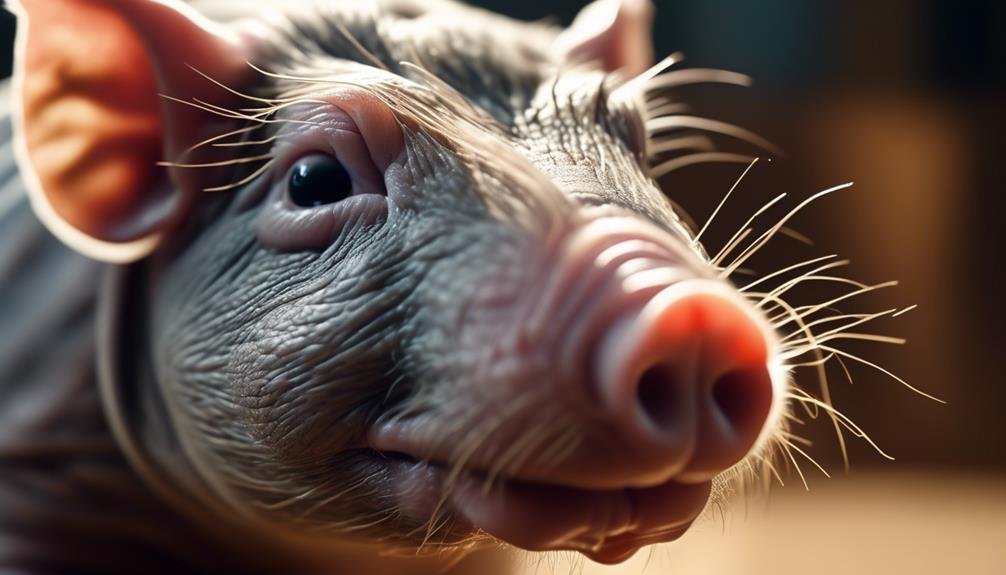
Common health issues can arise in skinny pigs due to their unique physiology and sensitive skin. It is important for owners to be aware of these potential issues and take appropriate measures to prevent and treat them.
Here are some common health issues that skinny pigs may experience:
- Sunburn and skin damage from UV light exposure
- Dry skin, which can be treated with coconut oil
- Sensitivity to creams, fragrances, and other topicals
- Susceptibility to fungal infections if bedding is not kept dry and clean
- Need for regulated environmental temperature to keep them comfortable
Skinny Pig Breeding and Genetics
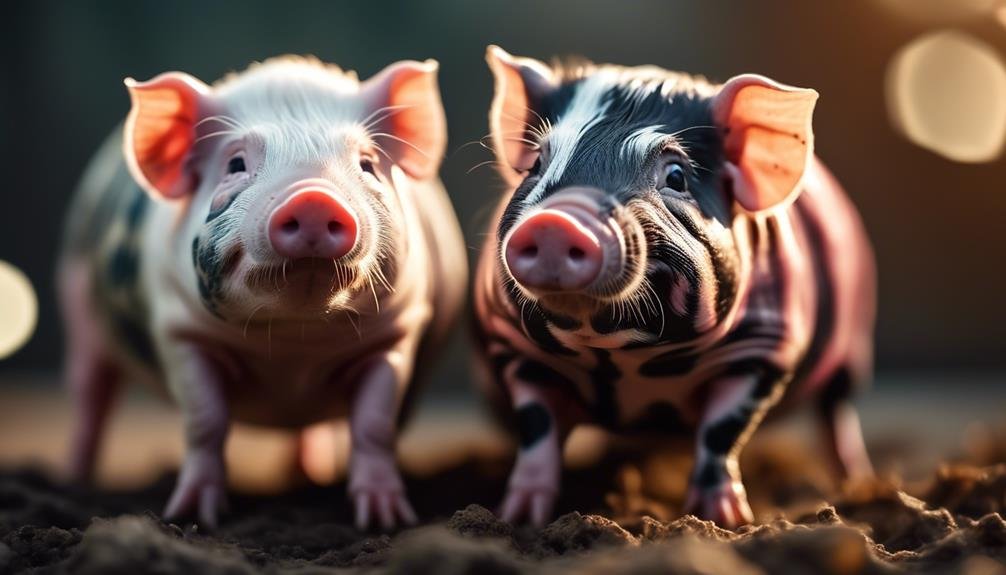
The breeding and genetics of skinny pigs are a subject of interest and study in the field of animal genetics.
Skinny pigs are a hairless or mostly hairless variety of guinea pig that originated from a genetic mutation identified in 1978. This mutation affects the production of hair follicles, resulting in their unique appearance.
The genetics of skinny pigs involve understanding the inheritance of the hairless trait and the potential for other genetic variations that may occur.
Breeders aim to produce healthy and genetically diverse skinny pigs through careful selection and breeding practices.
Resources for Learning More About Skinny Pigs

By exploring the vast array of resources available, individuals can deepen their understanding of the fascinating world of skinny pigs and further their knowledge on all aspects of their care and genetics.
Here are some valuable resources for learning more about skinny pigs:
- Online forums and communities dedicated to skinny pig enthusiasts provide a wealth of information and the opportunity to connect with experienced owners.
- Books and publications specifically focused on skinny pig care and genetics offer comprehensive and in-depth knowledge on the subject.
- Reputable breeders and rescue organizations can provide valuable insights and guidance on the care and adoption of skinny pigs.
- Veterinary professionals with experience in exotic or small animal medicine can offer expert advice and guidance on the health and well-being of skinny pigs.
- Online educational websites and blogs dedicated to guinea pig care often contain articles and guides specifically tailored to skinny pigs.
Frequently Asked Questions
Can Skinny Pigs Be Kept Outdoors?
Skinny pigs should not be kept outdoors due to their sensitivity to UV light and risk of sunburn and skin damage. They require a dry and clean environment to prevent fungal infections and should be housed in appropriate indoor enclosures.
Are Skinny Pigs More Prone to Certain Health Issues Compared to Furry Guinea Pigs?
Skinny pigs are more prone to certain health issues compared to furry guinea pigs. They have sensitive skin that can develop dryness and fungal infections if not properly cared for. UV light exposure can lead to sunburn and other skin damage.
How Often Should a Skinny Pig's Cage Be Cleaned?
To maintain a clean and healthy environment for a skinny pig, their cage should be cleaned more frequently compared to furry guinea pigs. Regular cleaning helps prevent fungal infections and keeps their sensitive skin in optimal condition.
What Is the Average Lifespan of a Skinny Pig?
The average lifespan of a skinny pig is typically around 5 to 8 years. However, with proper care, some skinny pigs have been known to live up to 10 years or more.
Do Skinny Pigs Require Any Special Grooming or Maintenance?
Skinny pigs require special grooming and maintenance due to their hairless nature. They are vulnerable to sunburn and dry skin, so regular application of coconut oil is recommended. Their cage also needs frequent cleaning to prevent fungal infections.
What Makes Skinny Pigs and Teddy Guinea Pigs Different in Terms of Care and Interaction?
Skinny pigs and teddy guinea pigs require similar care, but there are a few distinct differences. Teddy guinea pigs have long, curly fur that needs regular grooming, while skinny pigs are hairless and require special attention to stay warm. Both breeds make great pets and can bring joy to anyone in the enchanting teddy guinea pigs world.
Conclusion
In conclusion, Skinny Pigs are a fascinating and unique variety of guinea pig that require special care and attention. With their hairless or mostly hairless appearance, they stand out among their furry counterparts.
Their docile temperament and social nature make them excellent companions, but they may display skittishness in unfamiliar situations.
Proper diet and skin care are essential for their well-being, and suitable housing options should be provided.
By understanding their specific needs, one can fully appreciate and enjoy the joy of welcoming these extraordinary creatures into their life.




